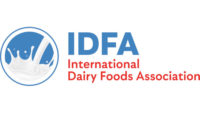FDA issued a final rule to revoke the standards of identity for lowfat yogurt and nonfat yogurt and amend the standard of identity for yogurt in numerous respects. The rule went into effect on July 12.
Joseph Scimeca, Ph.D., senior vice president of regulatory and scientific affairs for the Washington, D.C.-based International Dairy Foods Association (IDFA), issued the following statement on IDFA’s formal objection to the final rule.
“After 40 years of waiting since FDA first issued standards for yogurt, the FDA dropped a new final rule on the standard of identity for yogurt in late June, underscoring a lack of transparency in the FDA rulemaking process. Because the rulemaking process has been so severely delayed and because the agency has consulted very little with yogurt makers, the final rule is already out of date before it takes effect. For the most part, FDA relied on comments submitted 12 or more years ago to formulate its final rule — as if technology has not progressed or as if the yogurt making process itself has been trapped in amber like a prehistoric fossil.
“Although the International Dairy Foods Association (IDFA), which represents the nation’s yogurt makers, has been offering feedback or assistance to the FDA since it released its initial proposed rule in 2009, the agency has largely ignored our comments and suggested revisions to ensure a modernized standard. The result is a yogurt standard that is woefully behind the times and doesn’t match the reality of today’s food processing environment or the expectations of consumers. Unfortunately, IDFA has been left with no reasonable options except filing a formal objection to this final rule and imploring the agency to revisit the final rule to amend and truly modernize the standard of identity for yogurt.”
The compliance date of this final rule is January 1, 2024, which is the uniform compliance date for final food labeling regulations issued in 2021 and 2022, IDFA noted.
FDA said that publishing this final rule is a part of its Nutrition Innovation Strategy, one of the goals of which is to modernize food standards to maintain the basic nature and nutritional integrity of products while allowing food makers more flexibility for innovation. The final rule hits the mark in some areas and misses badly in others, IDFA said. For example, it consolidates three separate standards — for yogurt, low-fat yogurt and nonfat yogurt — into one standard of identity for yogurt, allowing food makers to nutritionally modify traditional standardized yogurt and then to communicate those modifications to consumers via label descriptions, product names and appropriate claims such as “low-fat yogurt.” This seems reasonable.
However, the final rule also expands the allowable ingredients in yogurt in some instances and adds confusing restrictions in others, IDFA said. FDA accepted industry suggestions and establishes a minimum amount of live and active cultures for yogurt containers to bear the labeling statement “contains live and active cultures” or a similar statement.
The final rule also allows manufacturers to fortify yogurts — for example, by adding vitamins A and D, provided they meet minimum fortification requirements, which also aligns with IDFA’s requests. However, the minimum fortification requirements are two to three times higher than standards for most dairy products and conflict with FDA’s own vitamin D regulations, IDFA said.
There is a wide range of yogurts of different flavors, protein levels, sugar and sweetener content, and milkfat content on grocery store shelves today, underscoring the variety that consumers want. IDFA said it and its members have long advocated for having a standard that reflects what consumers are eating today and flexible enough to allow for reasonable innovation tomorrow.
IDFA said it made several attempts to convey and explain recommended revisions to a 2009 proposed rule, but several of these, which would have aligned with current industry practices and allowed room for innovation, were not included in this revised standard.
To protect the products in the marketplace that consumers want and recognize as yogurt, IDFA said it submitted a formal objection to specific provisions of FDA’s final rule, including:
- Baseless and overly prescriptive limitations around what ingredients can be added after fermentation, such as cream, which fail to recognize that milkfat in cream contributes the same general properties to yogurt regardless of whether added before or after fermentation.
- Restrictions related to the required acidity and pH of the yogurt that, as written, could result in popular and traditional “cup-set” style yogurt products to be discontinued along with other styles.
- Conflicting new requirements that would deter yogurt makers from voluntarily adding vitamin D to yogurts, which companies have done for decades and hope to continue.
IDFA said it supports clear disclosure of non-nutritive sweeteners on labels where consumers are used to looking for this information in the ingredient declaration. However, the final rule doesn’t allow the use of non-nutritive sweeteners unless nutrient content claims such as “reduced calories” are used on the label.
IDFA said it believes this requirement will drive innovation in the yogurt industry away from the manufacture of standard of identity yogurt towards nonstandardized products. Further, the requirement runs counter to recommendations made in the 2020-2025 Dietary Guidelines for Americans (DGAs), when the agency should be incentivizing yogurt makers toward nutritionally enhanced products consistent with the DGAs.



